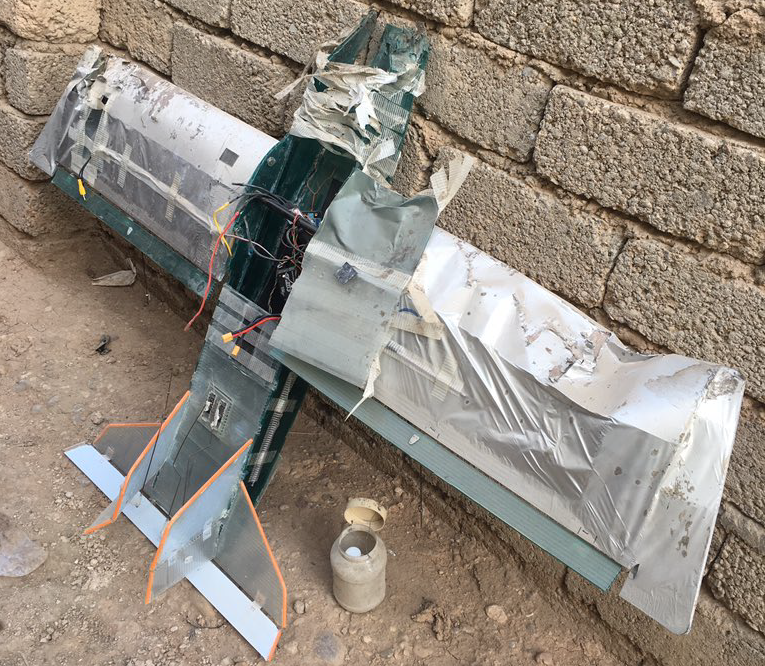What We Know About ISIS’s Scratch-built Drones
Clues from an abandoned drone workshop in Iraq

ISIS is building drones and using them in war. In February, field investigators from Conflict Armament Research found an ISIS drone-making workshop in Ramadi, two weeks after the city was liberated from the violent, insurgent group. Last month, an ISIS-flown drone killed two Kurdish fighters and injured two French commandos. Last week, a commander of the Iraqi Special Forces claimed that his forces were attacked by more explosive drones, and reporters on the ground in Iraq have seen the remnant of the scratch-built unmanned flying machines.
To better understand ISIS drones, I spoke with an investigator at Conflict Armament research, who requested anonymity given the sensitive nature of the work. When the investigator entered the workshop, there were no completed drones inside. Instead, they saw plywood fuselages and styrofoam wings, as well as a missile from a man-portable anti-air defense system, or MANPADS.
“For us it implied that they were trying to arm it, arm their drones with something that would be light enough to be carried by a drone, but also that would have the right kind of explosives for potency,” they said. Many of their finding were published in a report on the Islamic State’s Weaponized Drones. Most notably, the missile itself was taken apart, and the warhead and the steering component disassembled.
The ISIS drones all appeared to be scratch-built, said the investigator, “it was not like the off the shelf, like the Phantom or things you can buy.” Mass-produced quadcopters, like the DJI Phantom series, have many advantages; they can come with cameras and batteries, they’re known to work, and they’re designed to be simple to fly, but there are still major limitations in the designs. Most can only fly for a maximum of around 20 minutes on a full charge, and that flight time is reduced the more weight the drone is carrying.
So ISIS, instead, built its own drones. Notably, the investigators found a gyroscope sold by Turkish company Bomec Robot Teknolojileri for the Turkish domestic market in the workshop, suggesting that ISIS was trying to build a navigation tool for its scratch-made flying machines.
For as much as Conflict Armament Research found in the workshop, there’s still a lot left to discover about ISIS drones. The workshop “looks like they abandoned it while they were working,” says the investigator, but if ISIS had any working models, it looks like they took them when they fled. And, apart from the missile parts and the gyroscope, few electronic components were found. There were no controllers, cameras, or propulsion systems for the drones in the workshop, so that information, too, is unknown.
Given the recent sightings of ISIS drones, is it possible that ISIS could have rebuilt its workshop? “I would suppose it’s not that hard” said the investigator. They cited technical limitations for the drones to overcome: the weight of the payload, the range, and identifying a target. If ISIS was repurposing old warheads, they could have learned to make better, smaller bombs for the drones. By building fixed wing, lightweight drones from foam, it’s possible ISIS made flying machines that could travel longer distances. And any camera system at all, capable of transmitting video back to the pilots would be a pretty basic targeting tool.
The investigator says the lab in Ramadi looked like a research and development thing, a work in progress. With new drones seen in battle, and with casualties now clearly linked to ISIS drone bombs, it seems that research has come to deadly fruition.
Update: An earlier version of this story stated that Bomec Robot Teknolojileri makes gyroscopes. It is instead a distributor that sells parts, including gyroscopes. The change has been noted above.
